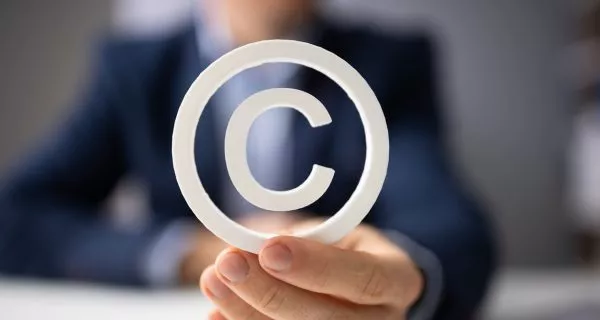In the copyright world, the general rule is that the creator of a work owns the copyright in that work. However, this general rule does not apply to all copyrightable works, including so-called “works for hire.” The copyright “work for hire” doctrine provides that the employer automatically owns the copyright in a work for hire created by its employee within the scope of the employee’s employment, absent a written agreement to the contrary. However, there are many misconceptions regarding “works for hire” under U.S. copyright law. First and foremost, the “work for hire” doctrine applies only to a very narrow category of works, as defined in Section 101 of the U.S. Copyright Act (Title 17 of the U.S. Code). Moreover, it only applies to copyrightable works, and does not extend to works protected by trade secrets, patents, or trademarks.
For companies that rely on the copyright ownership in works created by employees or outside contractors (and who doesn’t?), it is important to proactively secure and protect such ownership. The most effective way to avoid loss of copyright ownership due to a work failing to qualify as a “work for hire” under the Copyright Act is to include present assignment language in an employee invention assignment agreement (for employees) or consulting/development agreement (for non-employees). Even if the intended work product clearly qualifies as a work for hire, you may still want to include copyright assignment language in the applicable contract to avoid any confusion or surprises later and ensure your ownership of the copyright in a work that has been developed for you.
The following examples are just a few ways that employers have misinterpreted the copyright “work for hire” doctrine:
1. My employee created a software program, so my company automatically owns all of the intellectual property rights to that program.
Clarification: As mentioned above, the “work for hire” doctrine only applies with respect to copyrights; it is not applicable to other types of intellectual property rights such as patents and trade secrets.
2. My employee created a software program using their work computer, so my company automatically owns the copyright to that program.
Clarification: Only copyrightable works that are created by employees within the scope of their employment qualify as “works made for hire.” If your employee creates something outside of the scope of their job, on their own time, and/or using their own materials and devices, the employee may own the copyright to the work. To avoid any uncertainty, it is a good practice to use written employee invention assignment agreements to very clearly define what types of works (and related IP rights) an employer will own.
3. My company is paying a third party (individual or entity) to develop a software program, so the program must be a “work for hire” to which my company automatically owns the copyright.
Clarification: When it comes to independent contractors (either an individual or an entity), the Copyright Act is very specific about which “specially ordered or commissioned” works qualify as a work for hire. Specifically, only the following items will qualify as works for hire when created by a contractor subject to a written agreement:
-
- Contribution to a collective work
- Part of a motion picture or other audiovisual work
- Translation
- Supplementary work (secondary adjunct)
- Compilation
- Instructional text
- Test
- Answer material for a test
- Atlas
For other types of works, a written copyright assignment will be needed in order to transfer the copyright ownership from the contractor creating the work to the party paying for the work.
4. Software programs qualify as a “contribution to a collective work” for purposes of the Copyright Act, so, they are considered works for hire (and I don’t need a contract specifying copyright ownership).
Clarification: Although it may be true, in some cases, that a software program qualifies as a contribution to a collective work, the process of proving this for copyright ownership purposes could result in costly and time-consuming litigation. Therefore, it is a good practice to include specific, present assignment language in the software development agreement to make sure the copyright will be appropriately assigned.
5. I’m expressly designating the software being developed as a “work for hire” in my contract with the developer, thereby converting the software into a work for hire and ensuring automatic ownership of the copyright in the work.
Clarification: Just calling something a “work for hire” doesn’t change the Copyright Act laws or ownership of a copyright. If the work is created by an employee outside the scope of their employment, or by a contractor and the work is not within one of the identified categories, it will not qualify as a work for hire for copyright ownership purposes. Again, the safest way to protect your ownership in the copyright is to include present assignment language in the agreement pertaining to the software development.
If you have any questions about copyright matters, please contact Virginia Fournier at [email protected] or 408-891-8607.
A member of our California team, Virginia Fournier is a seasoned technology attorney with over 25 years of legal and business experience in the industry. She regularly handles a wide range of technology-related matters, including negotiating and drafting complex licensing agreements, compliance, data security and privacy, and intellectual property issues.
This publication should not be construed as legal advice or a legal opinion on any specific facts or circumstances not an offer to represent you. It is not intended to create, and receipt does not constitute, an attorney-client relationship. The contents are intended for general informational purposes only, and you are urged to consult your attorney concerning any particular situation and any specific legal questions you may have. Pursuant to applicable rules of professional conduct, portions of this publication may constitute Attorney Advertising.
